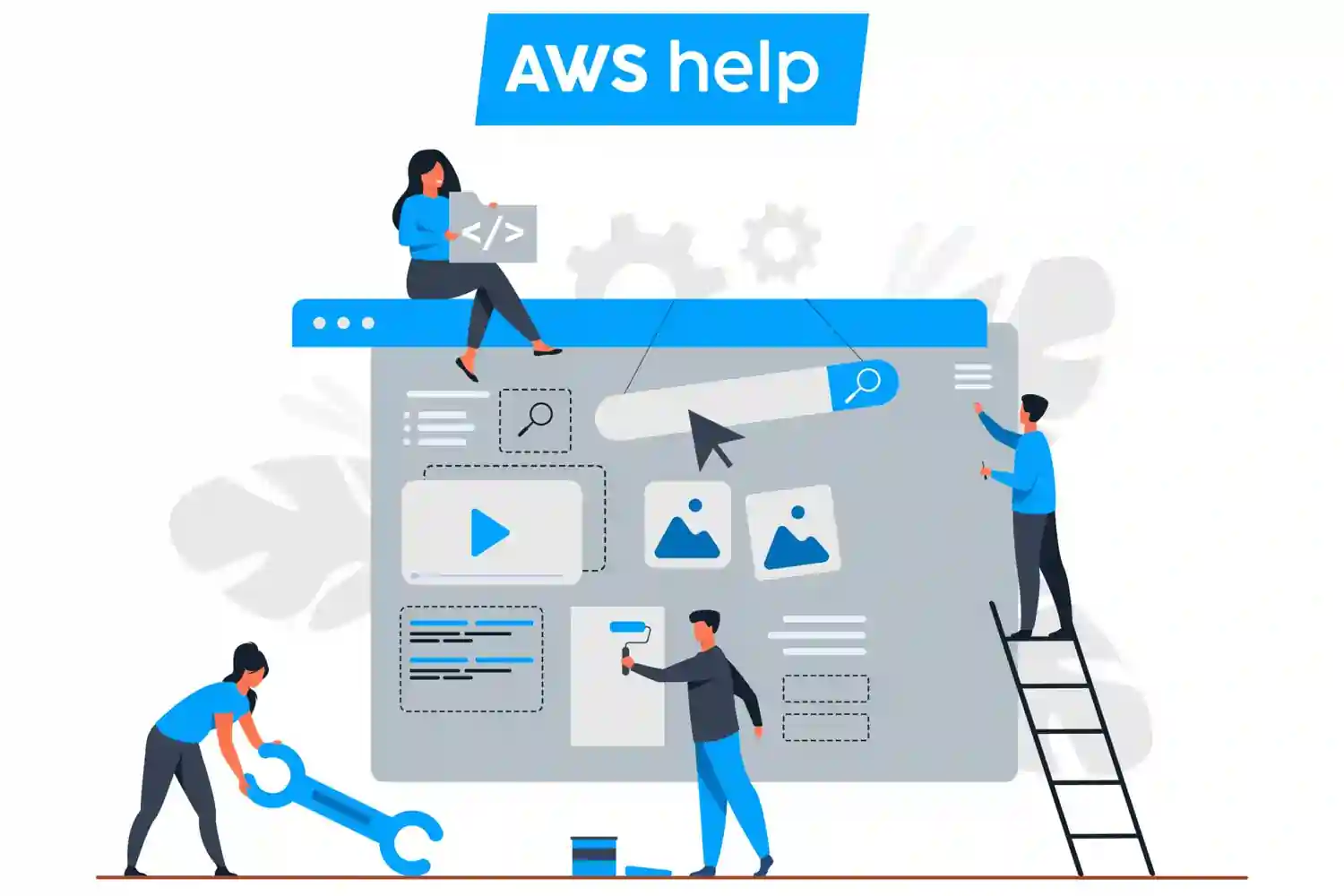
One such thing that has already begun altering the way businesses relate to computing infrastructure is Amazon Web Services (AWS). This flexibility however entails that with AWS, firms are able to effectively manage costs, resources and their responses. This article goes straight to business outcomes on how to leverage on AWS and the different proactive measures to ensure adequate costs, resources, and response rates are achieved.
Furthermore, AWS is invaluable for IT companies that offer custom web development services or develop apps for their clients by allowing those companies to let AWS manage the infrastructure and let them focus on their clients’ businesses hence abstracting the complexities of scaling infrastructure and server management.
Of all the benefits businesses are able to obtain from adopting AWS, the most significant is the cost factor. But to be sure, as any service, shall be used wrongly and one may end up spending more than he or she anticipated. AWS charges customers based on what they use, but certain strategies help companies minimize these costs:
AWS has multiple forms of instances with different capabilities to suit various needs of users. Organizations need to make sure they don’t utilize an instance that is too large for their operations. A good number of companies tend to overestimate their needs, and they end up putting their applications on larger instances than what is required, hence the money wasted is large. Another way is that it monitors the frequency of usage and optimizes the size of such an instance to avoid wasting resources.
In pricing policy, AWS has multiple pricing models available for the instances. Reserved Instances – these are perfect for organizations that require a steady level of server utilization as they provide large discounts as compared to On-Demand Instances. For workloads that can be interruptible and can accept planned interruption and unscheduled ones, the next cost-effective option is the Spot Instances. These are suitable for assembling, processing a big number of tasks and other non-emergency tasks.
Auto Scaling is another service offered in AWS that automatically scales the number of instances based on the traffic. This makes it possible for business enterprises to be able to pay as they go, or to pay only for what they require at any particular period of time. Through the scaling policies, the application infrastructure of firms can be scaled up, or down depending on the actual TrueNorth demand while avoiding a loss of money on resources that were not in use.
AWS offers several storage options such as Amazon S3, EBS and the Glacier all which are developed to meet different needs. Awakening the mobile data usage pattern can lead to some considerable money saving. For instance, active data should be available in S3, whereas inactive or backup data can always go to Glacier for such things as backup or very low retrieval frequency.
AWS Cost Explorer enables the business to analyze and even visualize AWS spending. Through frequent cost analysis and a clear understanding of the distribution of expenditures, a company is able to adapt its infrastructural needs very efficiently and make better decisions concerning the use of resources.
Resource utilization means using AWS resources in the best possible way or in the most optimal manner. Here are some effective methods for ensuring optimal resource utilization:
Elastic Load balancing ensures that the application traffic is spread out among instances thus providing high availability and fault tolerance. Thus,Application Load Balancer (ELB) identifies the unhealthy instances and directs traffic to the healthy ones while trying to balance the resources in an efficient manner without the need for human interference.
For businesses offering web development services, AWS Lambda provides an opportunity to execute the code without having to manage or even provision the servers. Lambda runs code on-demand and is elastic, in other words, you are never billed for the time your function is idle. This is especially the case in event-oriented applications where functions are initiated in response to specific events; making the use of the ‘events’ attribute cost and resource-efficient.
The cloud-based containerization solution by Amazon is the Amazon ECS (Elastic Container Service) and the EKS (Elastic Kubernetes Service). Containers are somewhat lighter than virtual machines and are easier to transport; it considerably decreases overhead as well. By arranging resources in form of containers, companies are able to only allocate the resources needed in running the applications
However, management of databases can at times be very demanding hence the availability of the managed database services provided by AWS including the Amazon RDS and Aurora. These services employ themselves in the management duties of databases such as patching, backing up and scaling of the service leaving the business enterprises to concentrate on core application functionality.
Regarding consolidation, Let me say that AWS consolidated billing is an important feature for any organization which has to manage multiple accounts because it allows for reporting on multiple costs and services usage under one umbrella with potential volume discounts. Resource tagging is an effective way to put metadata to resources, which will help to better control the production of resources between departments or projects.
Application response optimization is quite important for a variety of uses especially for those that involve real time data and user interfaces. This needs to be addressed and that’s why AWS provides several services and measures towards achieving this objective of optimizing the response time and generally improving the overall performance of the applications.
Amazon CloudFront is CDN services provided by Amazon Web Services that helps deliver content to users in with low latency and also with high data transfer speeds. CloudFront also stores multiple copies of the data in edge servers that are near the users, and thus when the data is delivered to the end-user, it only takes a short time hence improving the experience.
Elastic Beanstalk from Amazon web service is a good package, to help in the quick and easy application deployment. This involves the management of application’s provisioning, load balancing, scaling as well as its monitoring without the interference of developers. In this case, this service aids in endeavoring increased response time through the infrastructure that constantly adapts to the utilization.
Amazon ElastiCache on the other hand is a web service that assists businesses to increase response time by incorporating in-memory data store layer. ElastiCache is used to create caches using Redis or Memcached so that businesses can retrieve data that are frequently used with ease. This greatly offsets the burden of loading, thus helping enhance the rate at which information is pulled out from back-end databases.
AWS API Gateway enables businesses to build, operate, and secure APIs at a very low latency. API response can be optimized where features like caching, throttling, and monitoring can be implemented to make sure that the generated and made available applications will respond right away to users’ request in the shortest time possible.
AWS Global Accelerator helps to increase the availability and performance of applications and automatically routes traffic to the closest AWS endpoint. This leads to a low number of response delays and fast response to users especially those located in different regions.
For instance, to attain maximum performance in AWS, an organization should focus on the best approach that comprises costing, resource use, and response time factors. Here are some best practices:
Some of the available monitoring services in AWS include Amazon CloudWatch and the AWS Trusted Advisor. These services give live information on the condition and functionality of your infrastructures. It is effective to arrange the alerts by the important metrics where any possible complications are prevented from happening to the user.
Controlling is essential to get the most out of the services delivered by the company, specifically the AWS services. Therefore, when such tasks as scaling, patching and backups to mention but a few are done mechanically, human errors are eliminated while the business assets are made to attain the best performances at the lowest costs possible.
Security optimization is crucial in preventing possible threats and risks that may be targeting your resources in AWS. Some of the security tools given by AWS are AWS Identity and Access Management (IAM), AWS Shield and AWS WAF(Web Application Firewall). Various measures such as Proper security policies as well as proper permissions and configurations should always be conducted to minimize the exploitation of the resources and prevent costly hazards.
AWS’ optimization is not something that happens manually once. AWS should obtain planned or anticipated costs from businesses and conduct periodic assessment of AWS usage regarding costs, resources, and performance. Monitoring in AWS architecture helps one review AWS architecture to determine whether it has adopted new goals and whether traffic or application demands have changed.
The AWS has a rich set of functionalities that can support operations and growth for businesses but if not managed efficiently the price tags can quickly climb up and available resources can be exhausted. The featured AWS features, namely Auto Scaling, Lambda, CloudFront, and Elastic Beanstalk can help businesses maintain the cost efficiency of their infrastructure, optimum utilization of their resources and fast responsiveness of applications to the user requests.
For custom web development or mobile app development services it will be very helpful to follow these strategies for cost, resource, and response optimization to achieve maximum out of AWS and flexibility and scalability in the business plan shall be reflected in the infrastructure.
So, it’s possible to design the AWS infrastructure that is protected, efficient, and always ready for development by using approaches to monitoring, automation, and continuous improvement.
In today’s fast-paced digital world, having the right app or website is essential for your business’s success. At Digittrix, we specialize in building custom apps and websites tailored to your unique needs. Whether you want to enhance user engagement, streamline business processes, or create a seamless digital experience, our expert developers are here to help you bring your vision to life.
With 14 years of industry experience, we ensure that your app or website integrates the latest technology to keep you ahead of the competition. From initial planning to final deployment, our team works closely with you to design and implement the perfect solution for your business.
Ready to build your app or website? Schedule your appointment or book your consultation today with our expert technical managers by calling +91 8727000867
You can also write to us with any queries at digittrix@gmail.com


Written by Harsh Abrol
With Over 14 years of Experience in the IT Field, Helping Companies Optimise there Products for more Conversions
Do you need help in Web Development ?




Join over 1500+ businesses we've already helped!
To optimize AWS costs, consider right-sizing instances to match workload requirements, leveraging Reserved and Spot Instances, monitoring unused resources, optimizing storage solutions, using Auto-Scaling features, and utilizing cost management tools like AWS Budgets and Cost Explorer.
Businesses can optimize AWS resources by implementing resource tagging for better management, using Elastic Load Balancing to distribute traffic, adopting containerization with AWS Fargate for serverless computing, and optimizing databases and storage.
AWS Auto-Scaling dynamically adjusts the number of compute resources based on demand. This prevents over-provisioning and ensures that you only pay for the resources you need, leading to cost savings and efficient resource utilization.
AWS CloudFront is a content delivery network (CDN) that caches content at edge locations globally. This reduces latency by serving static assets like images and videos from servers closer to users, improving response times and load times.

©2025Digittrix Infotech Private Limited , All rights reserved.